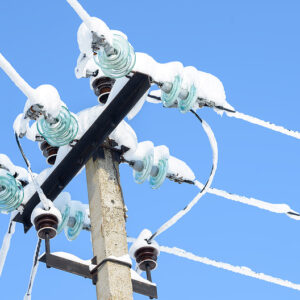TOMB: Shapiro’s Senseless Expansion of Alternative Energy

In 2004, Pennsylvania implemented one of the most aggressive mandates to adopt wind and solar energy. At the time, less than 1 percent of net energy generation came from these sources. In 2023, after nearly $1.5 billion in subsidies, wind and solar generated less than 2 percent.
So, what’s the point?
That’s the question Gov. Josh Shapiro must answer before any expansion to Pennsylvania’s Alternative Energy Portfolio Standards (AEPS). Instead, he is doubling down on uneconomical fuels and technologies, resulting in higher electricity bills and a less reliable infrastructure.
AEPS requires Pennsylvania suppliers to provide 18 percent of retail electricity sales from more than a dozen alternative energy sources.
One measurable benefit of AEPS has been burning waste coal for electricity generation, cleaning up millions of tons of refuse from nearly 800 waste piles left by centuries-old mining practices. Analysis from the Appalachian Region Independent Power Producers Association (ARIPPA) shows this industry has reclaimed more than 1,200 miles of polluted streams and 7,200 acres of land.
However, restructuring AEPS threatens to defund this worthwhile effort. Perversely, five of 15 waste-coal plants have closed because of environmental regulations and market forces hostile to coal.
“This is a huge concern for us,” said Jaret Gibbons, ARIPPA’s executive director.
Shapiro’s latest proposal, the Pennsylvania Reliable Energy Sustainability Standard (PRESS), mandates that 35 percent of electricity come from politically favored sources, such as wind, solar, and small modular nuclear, by 2035. PRESS also calls for another 10 percent from hydropower and batteries and 5 percent from low-emission sources, like certain kinds of natural gas generation.
The governor lauds the importance of this proposal to reduce carbon dioxide.
Yet, Pennsylvania has cut emissions annually, including a 10.8 percent reduction from 2022 to 2023—thanks to the expansion of natural gas. If emission reduction is the goal, the governor should pursue policies that bolster natural gas and nuclear, which can back up solar and wind when the weather doesn’t cooperate.
AEPS sales totaled about 25 million megawatt-hours in the 2021–22 reporting year. That’s enough to power 2.4 million homes. Less than one-third of those megawatt-hours came from wind and solar.
In under six months, the Homer City coal-fired power plant could produce energy equal to a year’s worth of AEPS-subsidized wind and solar power. Homer City, however, closed last year due to burdensome regulations.
AEPS touts the state’s 606 megawatts of solar capacity as enough to power more than 79,000 homes, or just about 1 percent of Pennsylvania’s 5.7 million housing units.
In 2007, AEPS predicted the commonwealth would install nearly 6,000 megawatts of wind capacity by 2013. However, as of May 2022, we’ve seen less than one-quarter of that amount. Even if AEPS met this target, the value would hinge, like solar, on wind’s dependence on nature’s vagaries.
The AEPS report claims the program created thousands of Pennsylvania jobs. Whatever jobs were “created,” it is impossible to produce net benefits by forcing more expensive, less reliable energy sources into an economy. Studies by the Beacon Hill Institute at Suffolk University and the Rhode Island Center for Freedom and Prosperity have concluded that such efforts result in economic losses, including fewer jobs and higher prices.
Industry leaders are growing wary of this transition to less reliable energy. David Taylor, head of the Pennsylvania Manufacturers’ Association, called Shapiro’s vision of an expanded AEPS “an environmental disaster, a threat to public safety, a danger to American national security, a disgrace on labor and human rights, and an abuse of Pennsylvania ratepayers.”
Costing taxpayers billions of dollars is bad enough, but the most immediate concern is the effect of more “green” mandates on power grid reliability. Industry and government officials have repeatedly warned of power shortages caused by an overreliance on wind and solar.
As Shapiro says, we don’t have to choose between jobs and our environment. But his proposal is bad for both. Pennsylvania’s energy policy must reward reliability and affordability and develop proven sources, like fossil fuels and nuclear power.
Twenty years after AEPS’s enactment, wind and solar still require subsidies while contributing meager amounts of unreliable energy. Will doing more of the same with PRESS produce anything different?
Again, what’s the point?



